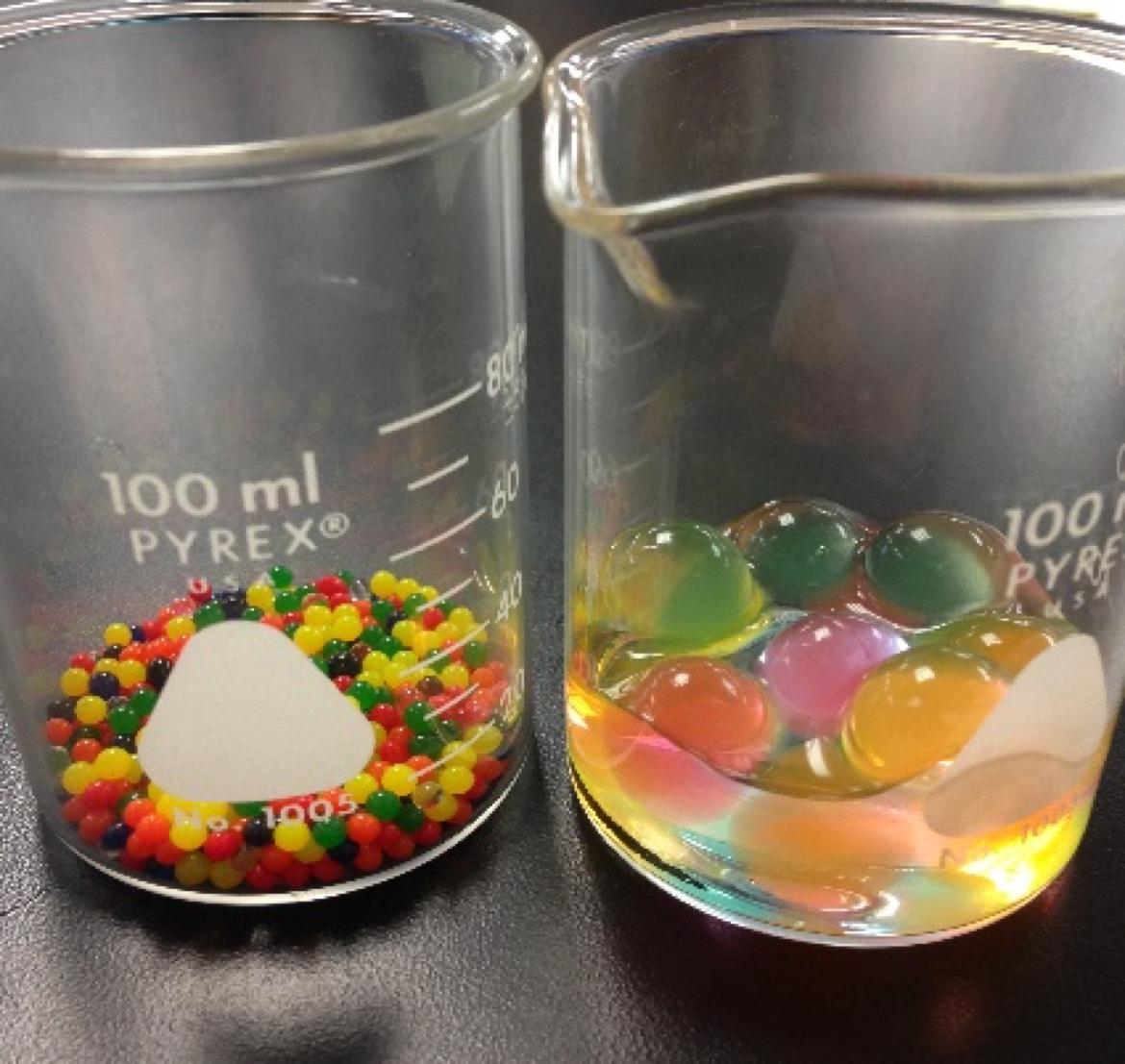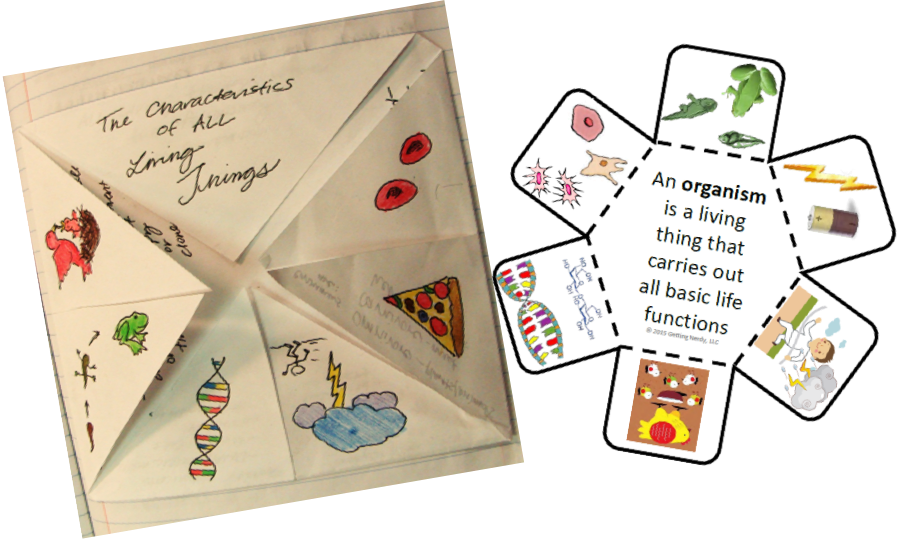Every year, before we start digging into the topic of cells, we want students to be able to tell the difference between living and non-living things. You wouldn’t believe how many students think water is alive – but that’s a great starting point. At the end of this lesson, students should be able to cite evidence when they are trying to determine if an unknown object is living or non-living and note the characteristics of living things. Here’s how our lesson might go:
Sponge or bellwork: Our lesson always starts with a bell-work question or activity that gets kids thinking about the topic at hand. For example:
- Ask students to determine whether the seeds inside a seed packet are alive or not alive.
- Ask students whether or not specific objects in a picture of an ecosystem are alive: water, rock, sun, tree, soil, animals or plants.
- Ask students what things they need in order to stay alive.
Remind them to cite evidence of their reasoning and that, while their thoughts and words are what we want them to record, options such as “I don’t know” or “because I think it is” are not acceptable answers.
Let’s Explore: Tell the students they will observe an “unknown object” for the rest of the class period and determine if it is living or non-living based on certain characteristics. Some of the kids will immediately recognize the beads as “Orbeez,” although some will not (you can grab these off Amazon, at your local Dollar Tree, or from the floral section of your craft store). Ask the students, “If you’ve seen this object before, please do not ruin the surprise for your classmates. Record observations with us. And at the end of class you can tell us exactly what it is.”
Then, give each lab group one dry water bead. Have them record the time and their observations about the water bead’s initial characteristics in their science journals. Then instruct all students to drop their water beads into their beakers and record another set of observations. Set a timer and continue visual observations every 10 to 15 minutes. Do NOT touch or remove the water beads from the water until the final observation.
Explain it: While the students monitor their beads and take their observations, go over the characteristics of living things. We had students create a seven-door foldable outlining the details of each characteristic and then add an illustrated representation of the characteristic on the outside. Our PowerPoint projected all information we discussed so that students could easily follow-along. While the Cells Interactive Notebook template is not necessary for this lesson, some students always seem to prefer the printed templates. You can get into a quick routine of “cut on the solid lines, fold on the dotted lines” and it can decrease the amount of time you might have to spend in class teaching the kids how to fold or where to cut. If we didn’t use the INB templates for instruction, we used them to reinforce this concept as homework, an exit ticket, or the next day’s bellwork. You can find our Cells Unit here and Cells Interactive Notebook Activities here.
Did They Get It?: At the end of class, have students remove their bead onto a paper-towel and make some final observations about it. Underneath their final observations, have students determine whether they feel the unknown object is living or non-living. Remind them again that they must cite evidence for their answer. These can be their exit ticket as they are walking out the door. (It’s ok if they spill the beans now that these are Orbeez. 🙂
Here’s a few extensions for this lesson:
- Have students research “Are viruses alive?” on devices and prepare to defend their answers.
- Revisit the bellwork from the beginning of this lesson and have students think about whether their answers have changed. If so, they can then revise and rewrite them in scientific language.
- Have students calculate the percent growth from the original size of the water bead to the final size of the water bead.
Need to modify?
- You might consider starting your “Explore” activity before your “Engage” activity so your water beads have the most time for growth. It takes over an hour for water beads to reach full-size (as shown in the picture). Or, if you have shorter class periods, you may want to use water beads that have previously soaked in water for 15 to 60 minutes. Although you’ll have students do the explore portion of the lesson as instructed, you’ll have an end product that they can observe.
- Print the slides (4 to a page) for students who have writing or executive functioning deficits.
- Pre-cut a few templates or have a fast-cutting class mate trim a few templates for students with fine motor skill deficits.
We’re headed toward cells and our old pal, Robert Hooke. Stay tuned and happy teaching!
Inspire Students. Love Teaching.
We have everything you need to successfully teach life science and biology. Join over 85,000 teachers that are seeing results with our lessons. Subscribe to our newsletter to get a coupon for $5 off your first order!





Very helpful. Thank you